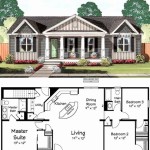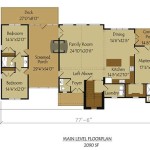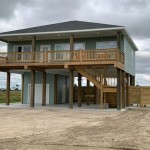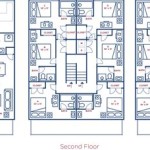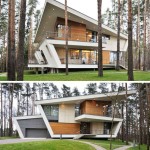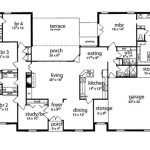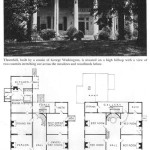Tropical house plans are blueprints and designs created specifically for constructing homes in tropical environments. These plans take into account the unique climatic conditions and lifestyle of tropical regions, where warm temperatures, high humidity, and frequent rainfall are prevalent.
Tropical house plans are characterized by their open floor plans, large windows, and spacious verandas. They often incorporate elements such as natural ventilation, solar panels, and water harvesting systems to maximize energy efficiency and reduce the environmental impact of the home. One notable example of a tropical house plan is the Baan Thai House, a traditional Thai design that features a raised floor plan to promote air circulation and a steep roof to shed heavy rainfall.
In the following sections, we will explore the key elements and benefits of tropical house plans, and provide insights into their design principles and construction techniques.
Tropical house plans offer numerous advantages for homeowners in warm, humid climates. Here are 10 important points to consider:
- Open floor plans
- Large windows
- Spacious verandas
- Natural ventilation
- Solar panels
- Water harvesting systems
- Elevated foundations
- Steep roofs
- Durable materials
- Energy efficiency
By incorporating these elements, tropical house plans create comfortable and sustainable living spaces that are well-suited to the unique challenges and opportunities of tropical environments.
Open floor plans
Open floor plans are a hallmark of tropical house plans. They create a spacious and airy living environment that is ideal for warm climates. By eliminating walls and partitions between different areas of the home, open floor plans allow for better airflow and natural ventilation.
- Maximize airflow: Open floor plans facilitate the movement of air throughout the home, reducing the need for artificial cooling systems.
- Enhance natural lighting: Large windows and open spaces allow ample natural light to enter the home, reducing the need for artificial lighting during the day.
- Create a sense of spaciousness: Open floor plans make homes feel larger and more inviting, especially in compact spaces.
- Promote social interaction: Open floor plans encourage family and friends to interact and connect, fostering a sense of community.
Overall, open floor plans are essential for creating comfortable and energy-efficient tropical homes that are well-suited to the warm, humid climate.
Large windows
Large windows are another key feature of tropical house plans. They allow for ample natural light to enter the home, reducing the need for artificial lighting during the day. This not only saves energy but also creates a more inviting and cheerful living environment.
In addition to providing natural light, large windows also offer stunning views of the surrounding landscape. In tropical regions, where nature is often lush and vibrant, large windows can bring the outdoors in, creating a seamless connection between the home and its environment.
Furthermore, large windows can help to improve ventilation and airflow in the home. By opening windows on opposite sides of the house, homeowners can create a cross-breeze that helps to circulate air and cool down the interior. This is especially important in warm, humid climates, where proper ventilation is essential for maintaining a comfortable living space.
When choosing windows for a tropical house plan, it is important to consider the local climate and environmental conditions. In areas with strong sunlight, windows should be fitted with UV-resistant glazing to protect the interior from harmful radiation. Additionally, windows should be designed to withstand high winds and heavy rainfall, which are common in many tropical regions.
Overall, large windows are an essential element of tropical house plans. They provide natural light, stunning views, improved ventilation, and a connection to the surrounding environment.
Spacious verandas
Spacious verandas are a defining feature of tropical house plans. These outdoor living spaces extend the living area of the home and provide a seamless transition between the interior and exterior. Verandas offer a shaded and protected area where homeowners can relax, entertain guests, or simply enjoy the tropical surroundings.
- Extended living space: Verandas significantly increase the usable living space of a home, providing an additional area for relaxation, dining, or entertaining.
- Indoor-outdoor connection: Verandas create a strong connection between the interior and exterior of the home. They allow homeowners to enjoy the outdoors without being exposed to the elements.
- Natural ventilation: Verandas can be used to promote natural ventilation by opening windows and doors on opposite sides. This helps to circulate air and cool down the home.
- Protection from the elements: Verandas provide shade and protection from rain, wind, and strong sunlight. This allows homeowners to enjoy the outdoors even during inclement weather.
When designing a veranda for a tropical house plan, it is important to consider the size, orientation, and materials used. Verandas should be large enough to accommodate furniture and provide ample space for movement. They should also be oriented to take advantage of prevailing breezes and natural light. Additionally, materials used for the veranda should be durable and resistant to the local climate conditions.
Natural ventilation
Natural ventilation is a key design principle in tropical house plans. It involves using passive design techniques to promote airflow and reduce the need for mechanical cooling systems. Natural ventilation can be achieved through a variety of means, including:
- Cross-ventilation: Cross-ventilation is the movement of air through a space by opening windows and doors on opposite sides of the building. This creates a pressure difference that draws air through the space, cooling it down.
- Stack ventilation: Stack ventilation is the movement of air through a building due to differences in temperature. Warm air rises, creating a vacuum that draws cooler air in from below. This type of ventilation is often used in multi-story buildings, where warm air can escape through upper-level windows and doors.
- Passive cooling: Passive cooling techniques, such as shading and thermal mass, can help to reduce the heat gain in a building, making it easier to cool down naturally.
- Fans and vents: Fans and vents can be used to supplement natural ventilation and improve airflow in specific areas of the home.
Natural ventilation is an important aspect of tropical house plans as it helps to create a comfortable and healthy living environment. By reducing the reliance on mechanical cooling systems, natural ventilation can also save energy and reduce the environmental impact of the home.
Solar panels
Solar panels are an important feature of many tropical house plans. They can generate electricity from sunlight, which can be used to power the home and reduce reliance on fossil fuels. Solar panels are particularly well-suited to tropical climates, where there is abundant sunshine throughout the year.
- Reduced energy costs: Solar panels can significantly reduce energy costs by generating electricity on-site. This can be especially beneficial in tropical regions, where electricity costs can be high.
- Reduced environmental impact: Solar panels generate clean, renewable energy, which helps to reduce the carbon footprint of the home and mitigate climate change.
- Increased energy independence: Solar panels can provide a degree of energy independence, reducing reliance on the grid and fossil fuels. This can be especially important in remote areas or during power outages.
- Increased home value: Homes with solar panels are often more valuable than those without, as they offer lower energy costs and a reduced environmental impact.
When considering solar panels for a tropical house plan, it is important to factor in the local climate conditions, the size of the home, and the energy needs of the occupants. A qualified solar installer can help to determine the optimal size and configuration of a solar panel system for a specific home.
Water harvesting systems
Water harvesting systems are an important consideration for tropical house plans. These systems collect and store rainwater for non-potable uses such as irrigation, washing, and toilet flushing. Water harvesting can help to reduce reliance on municipal water supplies and promote water conservation.
There are a variety of water harvesting techniques that can be used in tropical house plans. One common method is to install a rainwater storage tank. Rainwater is collected from the roof of the house and directed into the tank, where it is stored for later use. Another method is to use a rainwater catchment system. This involves collecting rainwater from a larger surface area, such as a driveway or patio, and directing it into a storage tank or cistern.
Water harvesting systems can be designed to meet the specific needs of a household. The size of the storage tank or cistern will depend on the amount of water that is needed and the amount of rainfall that is typically received in the area. It is important to consult with a qualified professional to determine the best water harvesting system for a particular home.
Water harvesting systems offer a number of benefits for tropical homes. They can help to reduce water consumption, lower water bills, and promote water conservation. Additionally, water harvesting systems can help to reduce the impact of droughts and other water shortages.
Overall, water harvesting systems are an important consideration for tropical house plans. These systems can help to reduce reliance on municipal water supplies, promote water conservation, and provide a sustainable source of water for non-potable uses.
Elevated foundations
Elevated foundations are an important feature of many tropical house plans. They raise the house above the ground level, providing protection from flooding, pests, and other environmental hazards. Elevated foundations are particularly beneficial in areas with heavy rainfall, high humidity, or uneven terrain.
There are several types of elevated foundations that can be used in tropical house plans. One common type is the pier and beam foundation. This type of foundation consists of concrete piers that are sunk into the ground and then connected by beams. The house is then built on top of the beams.
Another type of elevated foundation is the post and beam foundation. This type of foundation consists of wooden posts that are set into the ground and then connected by beams. The house is then built on top of the beams. Post and beam foundations are often used in areas with sloping terrain or poor soil conditions.
Elevated foundations offer a number of benefits for tropical homes. They provide protection from flooding, pests, and other environmental hazards. Additionally, elevated foundations can help to improve ventilation and airflow in the home, which can make it more comfortable to live in.
When designing an elevated foundation for a tropical house plan, it is important to consider the local climate conditions, the soil conditions, and the size and weight of the house. A qualified structural engineer can help to determine the best type of elevated foundation for a particular home.
Steep roofs
Steep roofs are a common feature of tropical house plans. They are designed to shed water quickly and efficiently, which is important in areas with heavy rainfall. Steep roofs also help to promote ventilation and airflow in the home, which can make it more comfortable to live in.
There are several types of steep roofs that can be used in tropical house plans. One common type is the gable roof. Gable roofs have two sloping sides that meet at a ridge at the top of the roof. Another common type of steep roof is the hip roof. Hip roofs have four sloping sides that meet at a point at the top of the roof.
The pitch of a roof is measured by the angle between the roof and the horizontal. The steeper the pitch, the more quickly water will shed off the roof. In tropical climates, a roof pitch of at least 30 degrees is recommended.
Steep roofs can be made from a variety of materials, including metal, tile, and asphalt shingles. The choice of roofing material will depend on the local climate conditions, the budget, and the desired aesthetic.
Overall, steep roofs are an important consideration for tropical house plans. They help to protect the home from the elements and promote ventilation and airflow. When designing a steep roof for a tropical house plan, it is important to consider the local climate conditions, the size and shape of the house, and the desired aesthetic.
Durable materials
When building a home in a tropical climate, it is important to use durable materials that can withstand the harsh conditions. Tropical climates are characterized by high humidity, heavy rainfall, and strong winds. These conditions can take a toll on building materials, causing them to deteriorate prematurely.
- Pressure-treated lumber: Pressure-treated lumber is treated with chemicals that protect it from rot, decay, and insects. It is a good choice for outdoor structures, such as decks, patios, and fences.
- Concrete: Concrete is a durable and versatile material that can be used for a variety of purposes, including foundations, walls, and floors. It is resistant to fire, rot, and insects.
- Masonry: Masonry materials, such as brick and stone, are also durable and resistant to the elements. They are often used for exterior walls and other structural components.
- Metal roofing: Metal roofing is a durable and long-lasting option for tropical homes. It is resistant to fire, rot, and insects. Metal roofing also reflects heat, which can help to keep the home cooler.
By using durable materials, homeowners can build homes that will withstand the challenges of a tropical climate and provide years of trouble-free living.
Energy efficiency
Energy efficiency is an important consideration for tropical house plans. Tropical climates are characterized by high temperatures and humidity, which can make it difficult to keep homes cool and comfortable. By incorporating energy-efficient features into the design of a tropical home, homeowners can reduce their energy consumption and save money on their utility bills.
One way to improve the energy efficiency of a tropical home is to use passive design techniques. Passive design techniques take advantage of the natural environment to heat and cool the home without the use of mechanical systems. Some common passive design techniques include:
- Orientation: Orienting the home to take advantage of prevailing breezes can help to naturally cool the home. In the Northern Hemisphere, homes should be oriented to face south to maximize exposure to the sun in the winter and minimize exposure to the sun in the summer.
- Shading: Shading the home from the sun can help to reduce heat gain. This can be done by using overhangs, awnings, or trees.
- Ventilation: Natural ventilation can help to cool the home by circulating air. This can be done by opening windows and doors or by using fans.
In addition to passive design techniques, there are a number of other ways to improve the energy efficiency of a tropical home. These include:
- Insulation: Insulating the home can help to reduce heat gain and loss. Insulation can be installed in the walls, ceiling, and floor.
- Energy-efficient appliances: Using energy-efficient appliances can help to reduce energy consumption. Look for appliances with the ENERGY STAR label.
- Renewable energy: Renewable energy sources, such as solar panels and wind turbines, can be used to generate electricity for the home. Renewable energy can help to reduce reliance on fossil fuels and lower energy costs.
By incorporating energy-efficient features into the design of a tropical home, homeowners can reduce their energy consumption, save money on their utility bills, and create a more comfortable and sustainable living environment.










Related Posts

